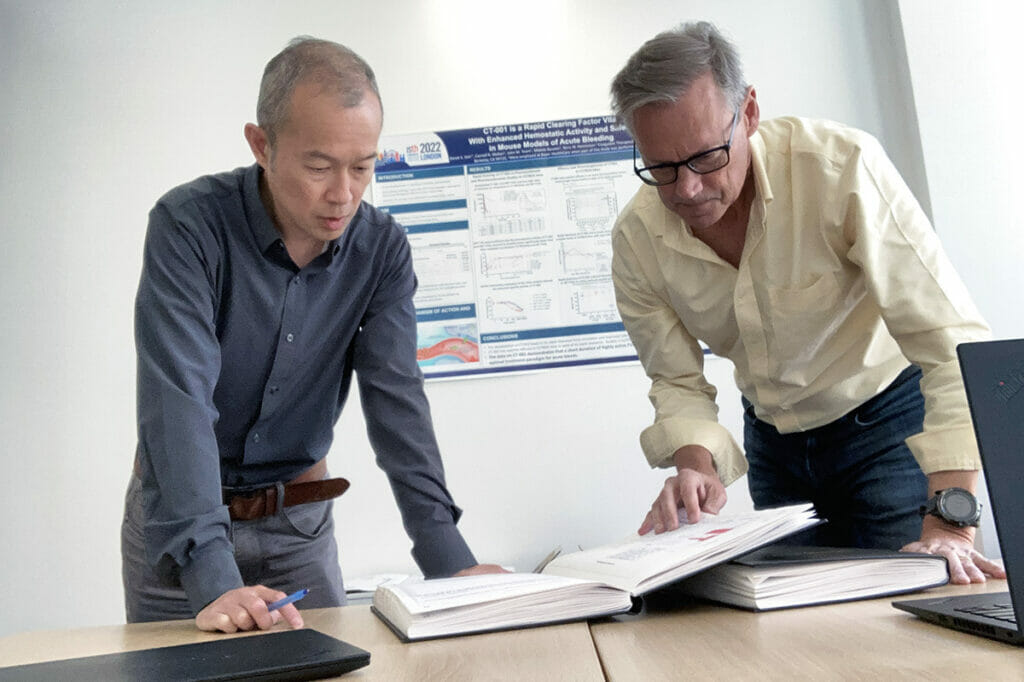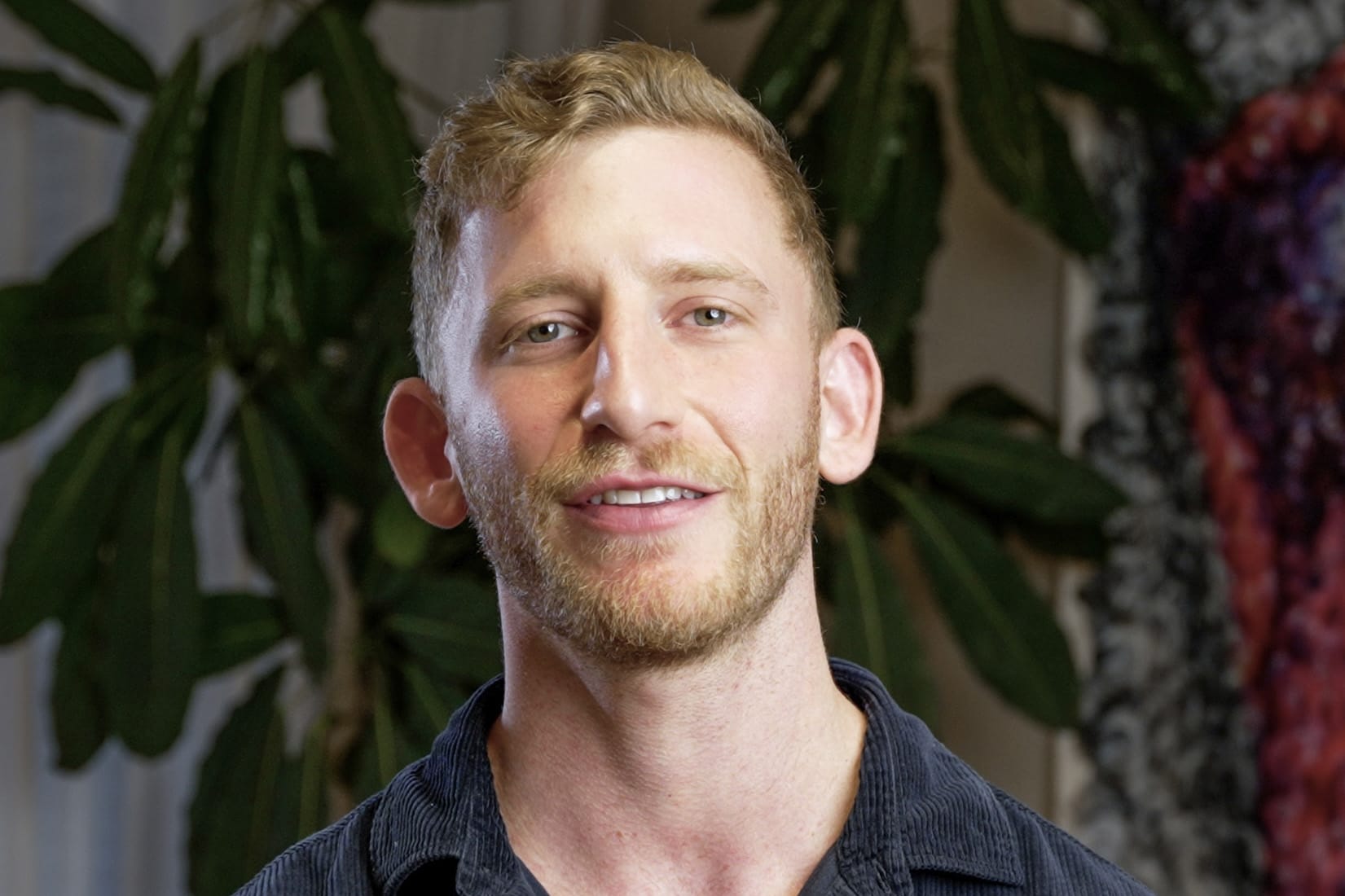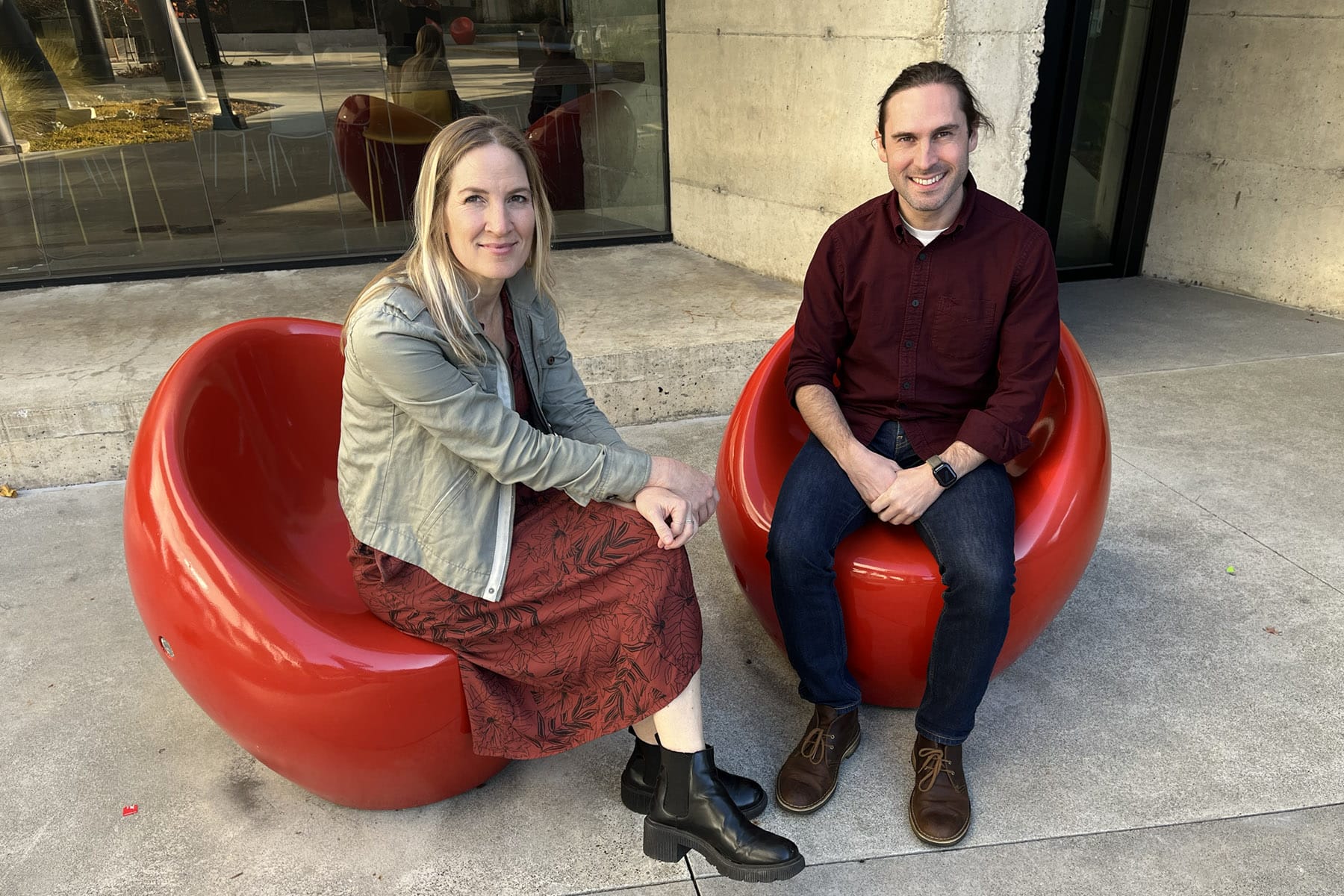Tenant Spotlight on Coagulant, a Company Defying the Odds to Save Lives
By Niki Borghei

Whether it’s because of car accidents or childbirth, sudden and severe bleeding is the most common cause of death for young people. So why are there no FDA-approved treatments for it?
“Why? Simple – most diseases are diagnosed, like cancer or cardiovascular disease, and then treated during a scheduled appointment. Acute bleeding is different. It occurs unpredictably and acutely. You must get to a hospital and hope that you are in time for a life-saving procedure,” says Terry Hermiston, founder and CEO of Coagulant Therapeutics.
When emergencies arise, doctors often have no other choice but to use drugs that are not approved to treat acute bleeding. One such drug is “recombinant Factor VIIa” (rFVIIa). While it may help stop bleeding, it remains active in the body for several hours, increasing the risk of fatal blood clots. But what if that could be fixed?
That is the goal of Terry and Coagulant CSO Derek Sim. The two began to develop the idea for a potential treatment when they launched the acute bleeding program at Bayer’s now-closed San Francisco Open Innovation Center. Terry left in 2017 to pursue entrepreneurial projects. Along with CMO Dr. Frank Booth, Terry and Derek are working to transform the current treatment landscape in acute bleeding. If they’re successful, their therapy could save up to 40% of the lives that would otherwise have been lost.
“We had a simple hypothesis – shorten the time of the activated coagulation factor in circulation, to reduce the possibility of unwanted blood clots, to increase its safety,” Terry explains. “To that end, we engineered rFVIIa to be fast-clearing, reducing its circulating half-life from 2 hours to 3 minutes.” Pre-clinical studies of their drug, CT-001, demonstrate that it rapidly clears out, reducing the risks of unwanted blood clots without compromising activity and efficacy.
Developing a treatment for acute bleeding is a tremendous opportunity to save lives, but it is also a unique market— a potentially multibillion dollar one at that. Because Coagulant is not “sharing” a piece of the market, as they would in oncology or cardiovascular disease, the market is theirs to build and develop. But as with every worthy cause, they face significant challenges.
One such challenge is how to conduct clinical trials. Because acute bleeding is unpredictable and varies in severity, more patients are required for clinical studies, which makes development more expensive. This is a barrier to Coagulant in the absence of significant investors and pharma partners. To circumvent this challenge, they sought to prove the efficacy of their treatment in a more cost-effective fashion by targeting severe postpartum hemorrhage.
“This condition is a leading cause of mortality in women during childbirth,” Terry says. “Approximately 5% of women continue to bleed following childbirth. They are then treated with uterotonics – treatments to contract the uterus – and this is often successful. However, if this fails, the mother is then subjected to an invasive procedure – embolization, ligation, or hysterectomy – costly procedures that can end in loss of fertility or even cost the life of the mother.”
Their preclinical work has now been published on CT-001, and they have received orphan drug designation for severe postpartum hemorrhage. But it doesn’t end there. Coagulant is building a pipeline of other molecules for treating acute bleeding in trauma and hemophilia. Recently, they presented at the American Society for Hematology on their unique nanobody library and shared that they have found leads to potential treatments for treating trauma and hemophilia with further potential expansion into adjacencies such as sepsis. Their manuscript on this was recently published in Blood Advances, a journal of the American Society of Hematology.
“I think anyone who meets me understands my passion for what I’m doing,” Terry says. “I’m not here to make a business per se. I am here to impact people’s lives. Sure, I hope it becomes a business in the process, but as I told my team, we’re going to be the first ones to solve this problem. And if nothing else, I think we can look back at ourselves at the end of this journey and know that we’re creating a movement in this field.”





